If you’re familiar at all with the Atlantic Ocean and its ecosystem, you probably already know a little about horseshoe crabs. At the very least, you know that they exist and that they have quite the presence on Delmarva. They’re in the ocean and around the shoreline, and when you peer into a shallow bay, you’re likely to find at least a few floating around. They’re far from the Maryland blue crabs that taste delicious with Old Bay and a side of melted butter, so what exactly are horseshoe crabs, and why do they look so weird?
Horseshoe crabs at a glance
The invertebrates are often referred to as “living fossils” because they’re super old and at a glance appear to be untouched by evolution. In fact, one species of horseshoe crab (the Lunataspis aurora) that was discovered in 2008 first walked the Earth’s shores about 445 million years ago.
Of course, like all living creatures, the horseshoe crab has evolved over time–it’s just continued to look almost the same as its hundred-million-year-old ancestors. Their solid, curved shells have worked hard over the years to defend them from predators, providing a sort of helmet of protection over their soft and sensitive undersides. The crabs have also been able to survive for so long because they can endure extreme temperatures and salinity, and because they can live for up to a year without food.
Why don’t they look like other crabs?
Because they’re not really crabs. “Horseshoe crab” is a very misleading name for the animal. Not only are they not really crabs, but they’re not even crustaceans! They’re classified by scientists as chelicerates, a subphylum that also includes arachnids, which means that the horseshoe crab has more in common with a spider than it does with a Maryland blue crab. The horseshoe crab, like land spiders and scorpions, has two main segments of its body and pincer-like claws called chelicerae.
Where can I find one?
Anywhere in Ocean City where there’s a natural body of water is a good place to start looking. There are four species of horseshoe crabs, and the one that we usually see is the Limulus polyphemus, a species that lives along the western shores of the Atlantic and is most commonly found in the Delaware bay region.
In fact, most of them gather in the Delaware Bay during the early summer months to partake in their mating ritual. Male horseshoe crabs wait along the water’s edge for female crabs to arrive and bury their eggs in holes for the males to fertilize. Sadly, many of these eggs will never hatch, as many animals including fish, birds and sea turtles depend on the eggs for food. Only about 10 in 90,000 of a mother crab’s eggs will reach adulthood, but that’s only because the horseshoe crab and its eggs are so essential to the local ecosystem.
Fun facts
You might not expect it just by looking at them, but horseshoe crabs are weird. Here are just a few fast facts that exemplify what strange creatures they really are.
- Their tails don’t sting, although many people assume they do. They’re used to help the crabs get through thick sand and muck, and to help them get right-side-up if and when they ever tip over. Horseshoe crabs are actually completely harmless.
- In the 20th century, before the advent of modern artificial fertilizers, the crabs were dried and used as fertilizer and poultry food supplements.
- The females are about 25% bigger than the males.
- They’re blue-blooded…
- And this blue, copper-based blood has been used since the 1950s to test the purity of medicine and to ensure that a vaccine is safe. This test has been mandatory since the 1970s for experimental drugs and surgical implants. Next time you see a horseshoe crab, thank them for their contribution to modern medicine and for saving so many humans from unsanitary injections!

